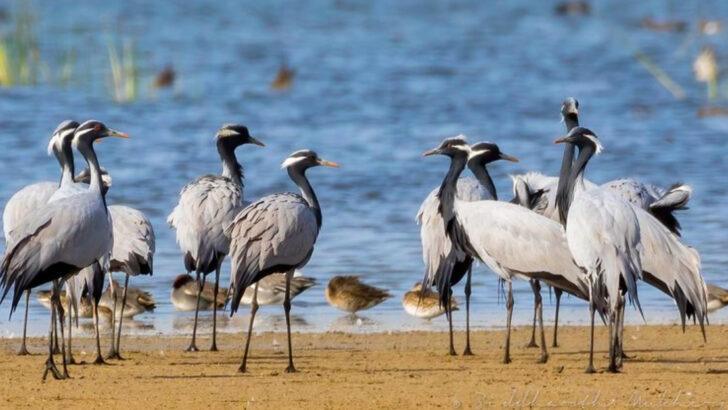Cranes aren’t just birds—they’re living poetry in motion. With their towering legs, elegant necks, and haunting calls, cranes bring a quiet kind of magic to wetlands across the globe. They dance, they glide, they rise on slow wings like creatures from a dream. But not all of them are thriving. While some species still roam freely across continents, others are disappearing before our eyes—caught in the crosshairs of habitat loss and vanishing water. Here are 9 crane species still gracing the skies and marshes—and 3 whose future hangs by a thread.
Whooping Crane
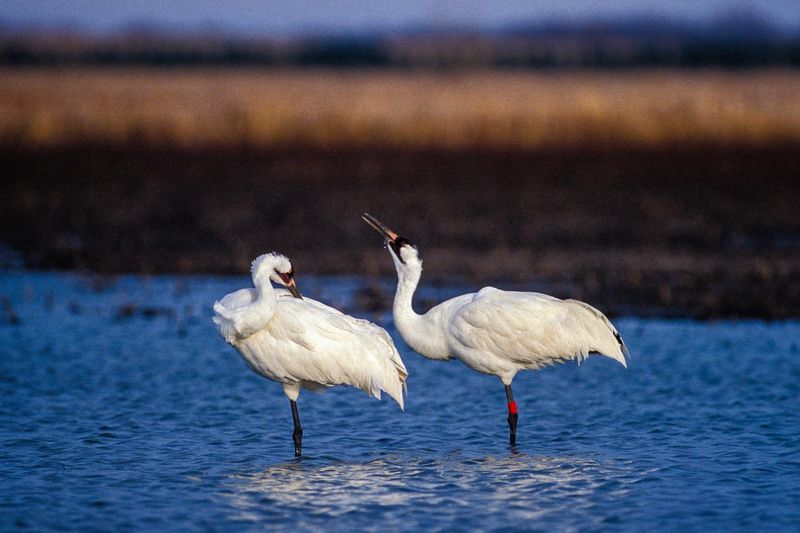
With a wingspan that rivals small aircraft, the Whooping Crane is a sight to behold. Found primarily in North American wetlands, these cranes are known for their elegant, slow movements and distinctive, whooping calls. Once on the brink of extinction, conservation efforts have helped their numbers rebound, although they remain vulnerable.
Did you know that these cranes mate for life? Their lifelong bonds are as vital to their survival as the wetland habitats they call home. The threat of habitat loss looms large, making conservation crucial for their continued survival.
Sarus Crane
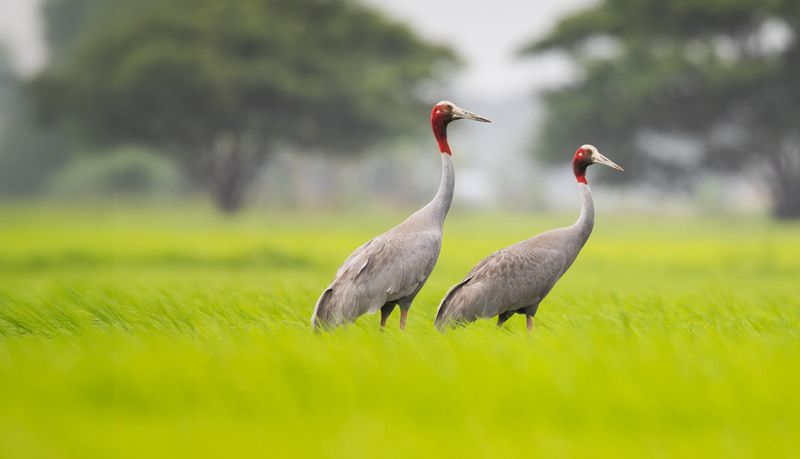
Among the tallest of all cranes, the Sarus Crane is a symbol of grace and loyalty. Found in the wetlands of India, Southeast Asia, and Australia, these majestic birds are known for their deep, trumpeting calls and social behavior.
Their presence in folklore and culture highlights their importance to human societies. Despite their cultural significance, Sarus Cranes are under threat from habitat degradation and hunting. Conservation initiatives are vital to ensure these magnificent birds continue to embellish the world’s wetlands.
Sandhill Crane
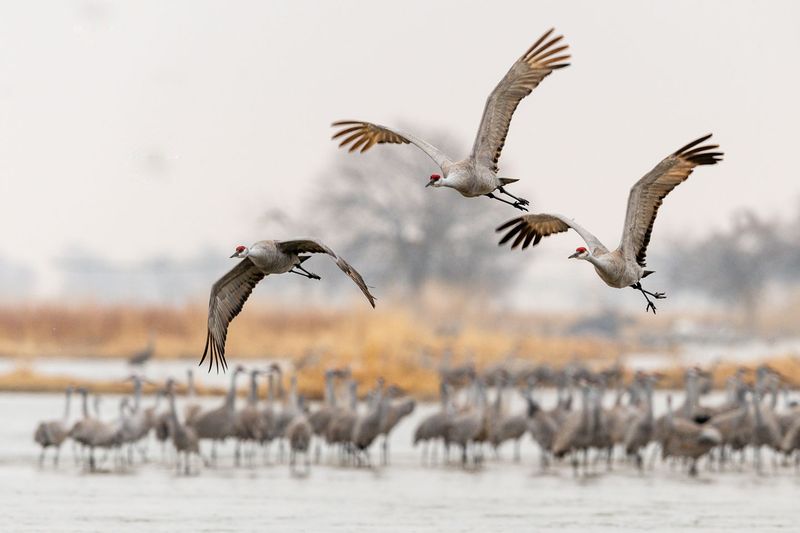
Known for their spectacular migratory gatherings, Sandhill Cranes paint the skies in shades of gray and red as they traverse North America. Their trumpeting calls mark the changing seasons, heralding the arrival of spring and autumn.
While their numbers are currently stable, changes in farming practices and wetland drainage pose future risks. The delicate dance of their courtship rituals, involving graceful leaps and bows, is a marvel of nature. Ensuring healthy habitats will allow these dances to continue for generations.
Red-crowned Crane
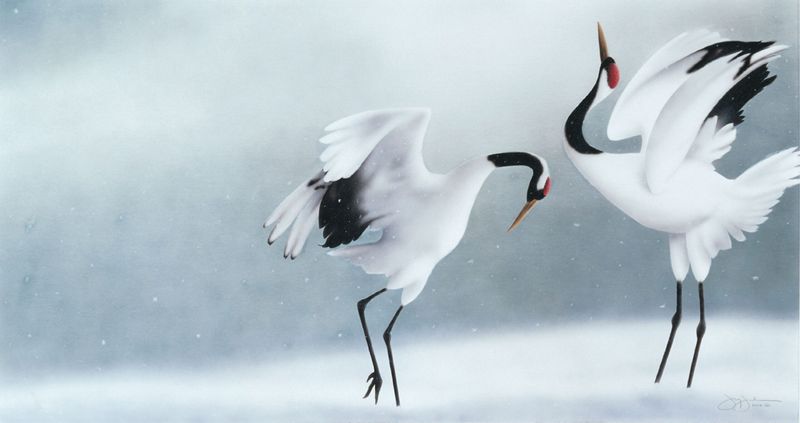
In the heart of Japanese mythology, the Red-crowned Crane is a revered symbol of longevity and luck. Their striking appearance and dignified presence in the snow-laden wetlands of Japan and Eastern Russia captivate observers.
These endangered cranes face threats from habitat loss and industrial development. Their intricate courtship dance, a spectacle of grace and precision, is a crucial part of their bonding process. Conservation efforts focus on preserving their habitats and ensuring these symbols of good fortune continue to thrive.
Black-necked Crane
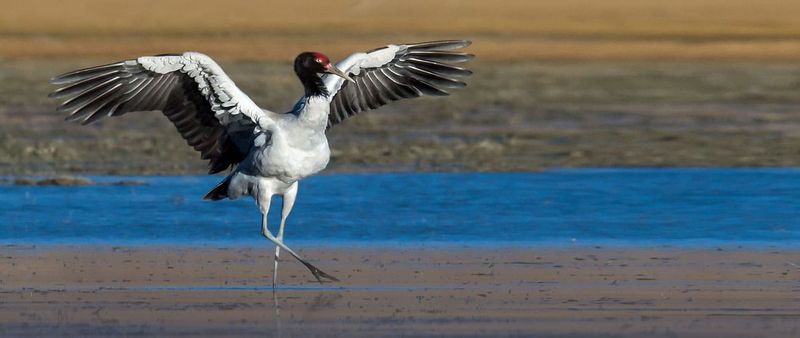
High in the Himalayan wetlands, the Black-necked Crane thrives in a mystical landscape. Known for their resilience, these cranes endure harsh climates and altitudes, captivating with their somber beauty.
Regarded as sacred in Tibetan culture, they are symbols of good fortune. However, climate change threatens their delicate habitats. Community-driven conservation projects aim to preserve these unique environments, ensuring the Black-necked Crane’s enchanting presence endures in the Himalayas.
Demoiselle Crane
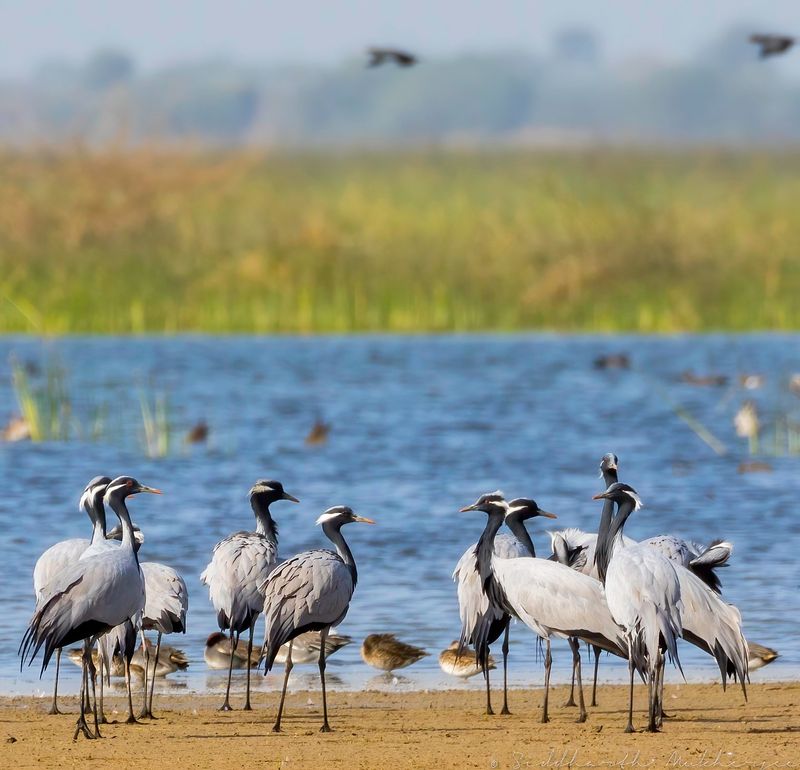
The Demoiselle Crane, smallest of the crane family, is renowned for its elegance and grace. Found across Eurasian steppes, these cranes migrate in flocks, creating a breathtaking spectacle.
Their ability to survive in diverse climates, from hot deserts to cold mountains, showcases their adaptability. Yet, they face challenges from habitat encroachment and climate change. Protecting migration corridors is critical to safeguard their journey from breeding to wintering grounds.
Grey-crowned Crane
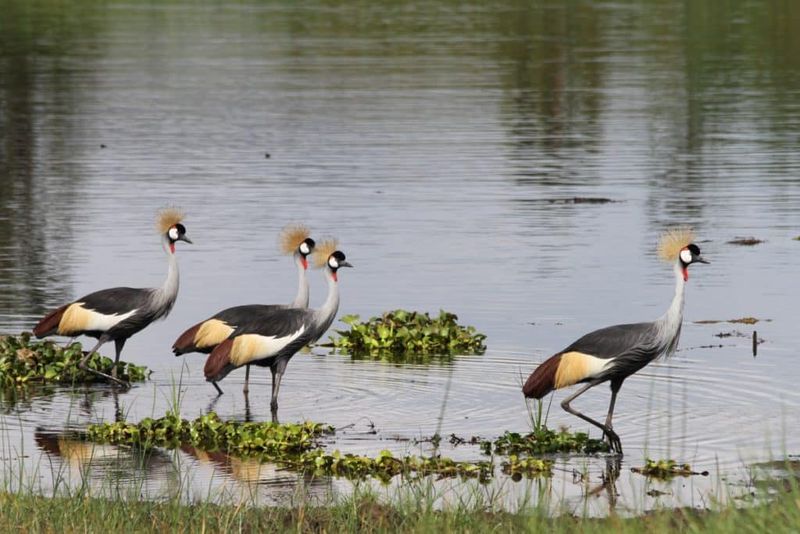
In the wetlands of Africa, the Grey-crowned Crane stands out with its vibrant golden crown and vivid plumage. Known for their elaborate courtship dances, these cranes capture the imagination with their beauty and charisma.
Despite their joyful appearances, they face threats from wetland degradation and illegal pet trade. Efforts to protect their habitats are essential to maintain their populations. These cranes are not just icons of the African wetlands but ambassadors for conservation across the continent.
Wattled Crane
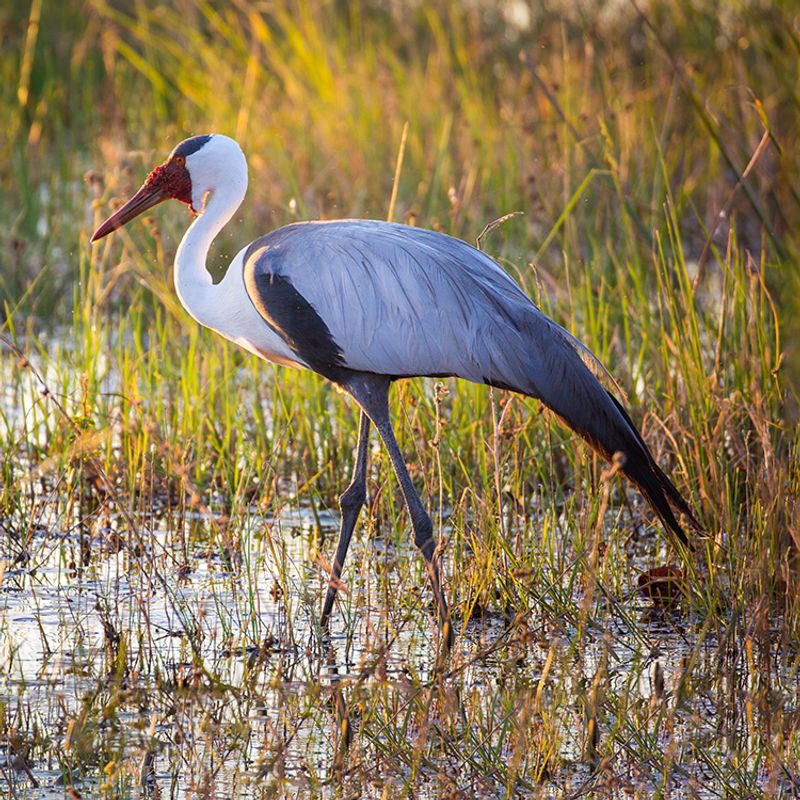
The Wattled Crane, Africa’s largest crane species, is distinguished by its unique wattles and stately appearance. Residing in the continent’s wetlands, they are essential indicators of ecosystem health.
Their survival is intricately linked to water quality and availability. With habitats under siege from agricultural expansion, conservation efforts focus on sustainable wetland management. These cranes remind us of the delicate balance required to preserve biodiversity in the ever-changing African landscape.
Brolga
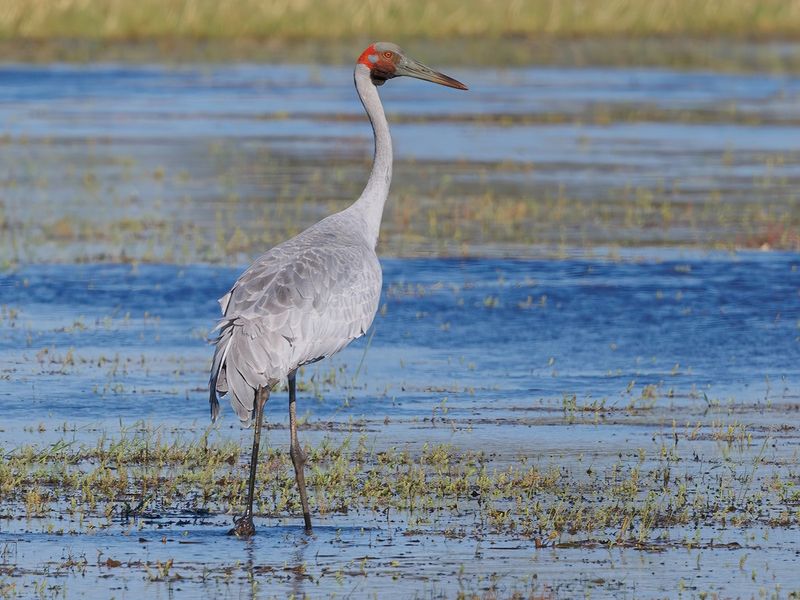
Renowned for their elaborate dances, Brolgas are a spectacle of grace and coordination in the wetlands of Australia. Their dances not only facilitate bonding but also play a role in territory establishment.
While these cranes are culturally significant, they face threats from habitat loss and changes in water management. Protecting their environments ensures that Brolgas continue to delight observers with their performances, a testament to the rich biodiversity of Australian wetlands.
Siberian Crane

The Siberian Crane’s bright white plumage stands out in the stark landscapes of Eastern Russia and China. Known for their arduous migrations, they travel great distances between breeding and wintering grounds.
Their populations are critically endangered due to habitat destruction and climate change. International cooperation is key to conserving these cranes, with efforts focused on protecting critical wetlands along their migratory path. Their survival is emblematic of global conservation challenges.
Blue Crane
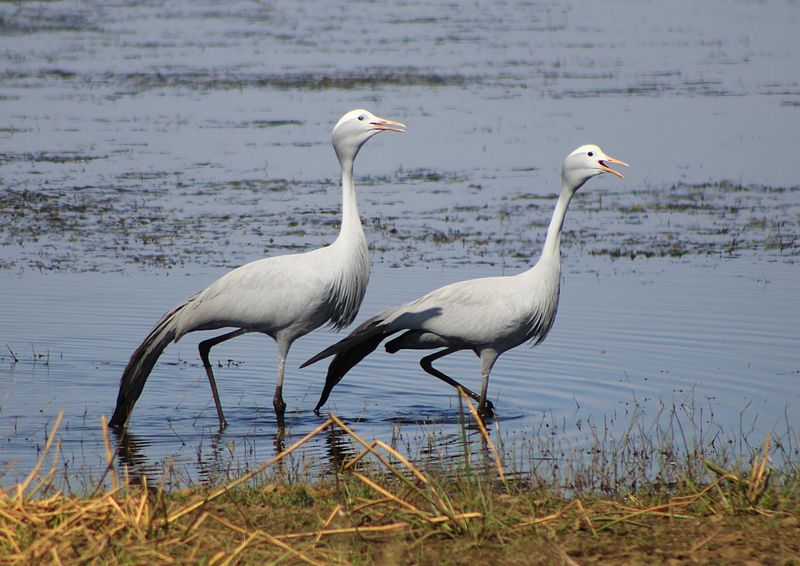
South Africa’s national bird, the Blue Crane, epitomizes elegance with its slender neck and striking slate-gray plumage. Found in the country’s grasslands, they symbolize peace and prosperity.
Yet, their numbers are declining due to habitat transformation and human-induced threats. Conservation efforts are crucial to protect these iconic birds, ensuring they remain a living symbol of South Africa’s natural heritage.
Hooded Crane
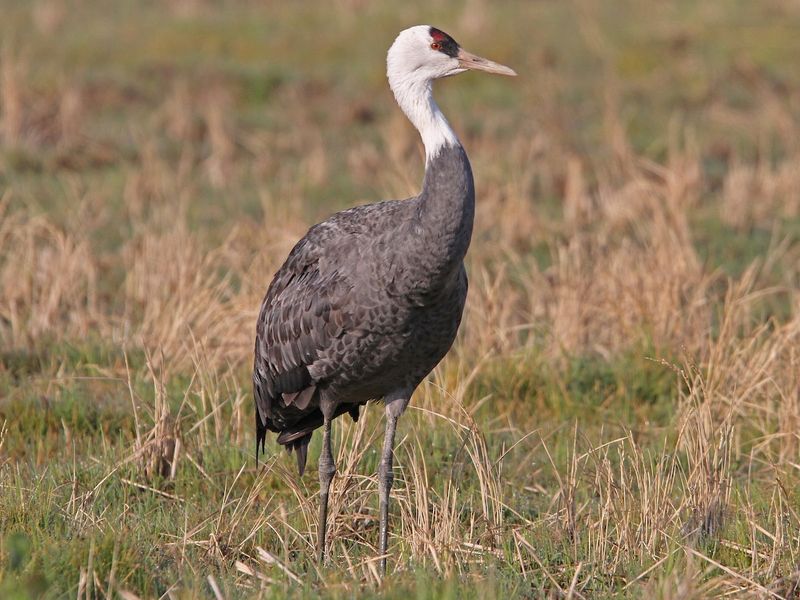
The Hooded Crane, with its striking color contrast, is a spectacle during migration stopovers in East Asia. Their white hood and dark body create a stunning visual.
Facing threats from habitat loss and environmental changes, their migratory routes are under pressure. Conserving these routes is essential to their survival, ensuring they return year after year to the wetlands that sustain them.

